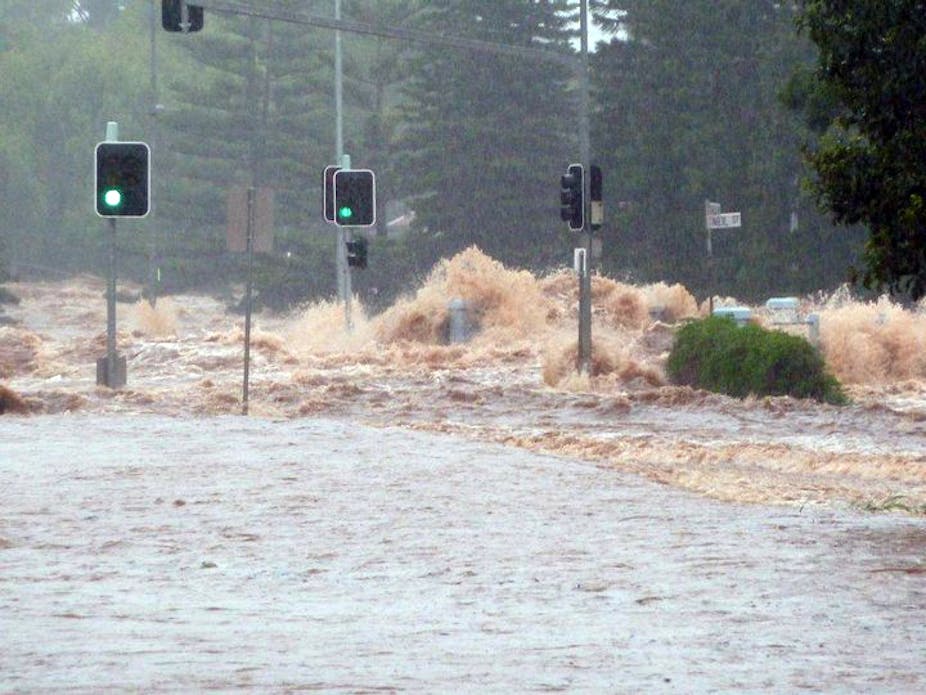Severe droughts, floods and landslides devastated parts of the world last year as carbon dioxide concentrations climbed to the highest levels in recorded history, according to a global report on climate that describes 2011 as a year of “extreme events”.
Atmospheric carbon dioxide concentrations topped 390 parts per million for the first time since instrumental records began, and the Arctic continued to warm at twice the rate of the rest of the planet, the report says.
The US National Oceanic and Atmospheric Administration (NOAA) State of the Climate in 2011, compiled by 378 scientists from 48 countries, says that although the combined average temperature across global land and ocean surfaces for the year was the coolest since 2008, 2011 was still among the 15 warmest years on record.
A La Nina event at the beginning of the year that reemerged in September contributed to historical droughts in East Africa, the southern United States and northern Mexico, as well the wettest two-year period (2010–11) on record for Australia - “particularly remarkable as this follows a decade-long dry period”. La Nina also triggered Brazil’s worst floods and landslides.
“2011 will be remembered as a year of extreme events, both in the United States and around the world,” said Deputy NOAA Administrator Kathryn Sullivan. “Every weather event that happens now takes place in the context of a changing global environment. This annual report provides scientists and citizens alike with an analysis of what has happened so we can all prepare for what is to come.”
The report also says that ozone concentrations in the Arctic stratosphere during March were the lowest for that period since satellite records began in 1979. It adds: “An extensive, deep, and persistent ozone hole over the Antarctic in September indicates that the recovery to pre-1980 conditions is proceeding very slowly.”
In the Canadian Arctic, the mass loss from glaciers and ice caps was the greatest since GRACE satellite measurements began in 2002.
Karl Braganza, the Manager of Climate Monitoring at the National Climate Centre, Bureau of Meteorology, said that while much focus had been placed on extreme events, the report also confirmed long-running trends.
“Most notably, the Arctic continues to warm at a very rapid rate … continuing a now well-established trend,” Dr Braganza said. “The warming of the Arctic and the loss of Arctic sea-ice is one of the key positive feedback mechanisms involved in amplifying greenhouse-forced climate change. Arctic sea-ice extent was the second lowest on record at the end of the 2011 summer, and is tracking at lowest on record for 2012.
"In addition, the ocean heat content, a measure of heat stored in the oceans, was also in record territory during 2011, and continues another well-established long-term warming trend.”
Global atmospheric carbon dioxide concentrations were very likely the highest in the past 100,000 years, and perhaps the past several million years, Dr Braganza said.
“Atmospheric carbon dioxide levels are now similar to those during the Pliocene, a much warmer period than any experienced by modern humans.
"These indicators show that climate change, especially changes to atmospheric chemistry, are not just continuing but tracking at the more extreme end of possible scenarios.”
In Australia, the back-to-back La Nina events contributed to a two-year rainfall total for the 2010–11 period of 1408 millimetres. This surpassed the previous record of 1407 millimetres, set during 1973 and 1974. The 2011 total was 51.6% above the average of 705 millimetres.
The heavy rainfall eased maximum temperatures over much of the country, taking the annual mean temperature below the 1961–90 average - with an anomaly of -0.14 degrees. “Despite 2011’s cool anomaly,” the report says, “the 10-year average for 2002–11 was the equal-warmest 10-year period on record for Australia.”
David Karoly, a Professor of Climate Science from the School of Earth Sciences at the University of Melbourne, said the report “provides detailed evidence of continuing climate change, including record-high global concentrations of carbon dioxide and ongoing warming of the upper layers of the ocean.
"Many of the regional variations of climate in 2011, including in Australia, were dominated by the effects of La Nina. In Australia, this led to record-high two year totals of rainfall, many areas in eastern and northern Australia experiencing flooding, lower than recent average temperatures, but very dry and hot conditions in the southwest of Western Australia.”

